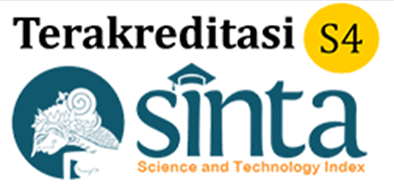Penanganan Stunting di Provinsi Sumatera Barat dalam Perspektif Sound Governance
Abstract
Even though the SSGI stunting rate decreased from 24.4% in 2021 to 21.6% in 2022, West Sumatra province is one of the provinces in Indonesia with a fairly high stunting rate. One of the cities in West Sumatra which is the largest producer of animal and vegetable food is the city of Padang Panjang. The potential of Padang Panjang City is expected to be able to support the development of the younger generation optimally. However, ironically, around 19% of teenagers still suffered from malnutrition and stunting in Padang Panjang City in 2018. Apart from that, the third area in West Sumatra Province that was designated by Bappenas as a place to care for stunted children, namely Solok Regency. This research uses the concept/theory of good governance according to Ali Farazmand. This research uses a literature review method. This research produces an analysis of the existence of inclusive policies to support the accessibility of district/city areas which have an impact on the potential for economic prosperity. Furthermore, this becomes the axis of health and nutrition development. Finally, there should be policies that produce international synergy in the use of agricultural and fisheries resources which have an influence on the development of health and nutrition in the region.
References
Anggraini, Y., & Rusdy, H. N. (2019). Faktor Yang Berhubungan Dengan Stunting Pada Balita Di Wilayah Kerja Puskesmas Air Bangis Kabupaten Pasaman Barat. Dinamika Kesehatan Jurnal Kebidanan Dan Keperawatan, 10(2), 902–910. https://doi.org/10.33859/dksm.v10i2.472
Annisa, K. (2021). Implementasi Kebijakan Penurunan Stunting oleh Badan Kependudukan dan Keluarga Berencana Nasional Provinsi Sumatera Barat di Kabupaten Solok. Universitas Negeri Padang.
Farazmand, A. (2004). Sound governance : policy and administrative innovations. In Praeger Publishers. Praeger Publisher.
Fink, A. (2014). Conducting Research Literature Reviews: From the Internet to Paper. In U. of C. at L. Angeles (Ed.), Evaluation Journal of Australasia (Fourth, Vol. 7, Issue 1). SAGE Publications Sage UK: London, England. https://doi.org/10.1177/1035719x0700700117
Firdaus, F. (2016). Sound Governance in the Development of Mamminasata Metropolitan Areas in South Sulawesi Province. JKAP (Jurnal Kebijakan Dan Administrasi Publik), 20(1), 1. https://doi.org/10.22146/jkap.9915
Hamzah, S. R., & B, H. (2020). Gerakan Pencegahan Stunting Melalui Edukasi pada Masyarakat di Desa Muntoi Kabupaten Bolaang Mongondow. JPKMI (Jurnal Pengabdian Kepada Masyarakat Indonesia), 1(4), 229–235. https://doi.org/10.36596/jpkmi.v1i4.95
Haryanti, T., & Nurhayati. (2019). Penegakan Hukum Hak Asasi Manusia bagi Anak Penderita Stunting. Jurnal HAM, 10(2), 249. https://doi.org/10.30641/ham.2019.10.249-260
Indrawati, L., & Tjandrarini, D. H. (2018). Peran Indikator Pelayanan Kesehatan untuk Meningkatkan Nilai Sub Indeks Kesehatan Reproduksi dalam Indeks Pembangunan Kesehatan Masyarakat (IPKM). Media Penelitian Dan Pengembangan Kesehatan, 28(2), 95–102. https://doi.org/10.22435/mpk.v28i2.180
Ipan, Purnamasari, H., & Priyanti, E. (2021). Collaborative Governance dalam Penanganan Stunting. Kinerja, 18(3), 383–391.
Katz, A. (2007). Pharmaceutical lemons: innovation and regulation in the drug industry. Mich. Telecomm. & Tech. L. Rev., 14, 1.
Kemenkes RI. (2010). Rencana Strategi Kementerian Kesehatan Tahun2010-2014. In Kementerian Kesehatan RI. Kementerian Kesehatan RI.
Kooiman, J. (1993). Modern governance: new government-society interactions. Sage.
Laili, I., & Andriani, R. A. D. (2023). Pemberdayaan Masyarakat dalam Pencegahan Stunting. JPKMI (Jurnal Pengabdian Kepada Masyarakat Indonesia), 4(1), 85–94. https://doi.org/10.36596/jpkmi.v4i1.552
Malau, N. A. (2021). Sektor Unggulan Ekonomi Indonesia. Bonus Demografi Sebagai Peluang Indonesia Dalam Percepatan Pembangunan Ekonomi, 1, 90.
Masrul, M. (2019). Gambaran Pola Asuh Psikososial Anak Stunting dan Anak Normal di Wilayah Lokus Stunting Kabupaten Pasaman dan Pasaman Barat Sumatera Barat. Jurnal Kesehatan Andalas, 8(1), 112. https://doi.org/10.25077/jka.v8i1.978
Media, Y., & Elfemi, D. (2021). Permasalahan Sosial Budaya Dan Alternatif Kebijakan Dalam Upaya Penanggulangan Stunting Pada Balita Di Kabupaten Solok, Provinsi Sumatera Barat. Jurnal Ekologi Kesehatan, Vol 20 No 1 (2021):Jurnal Ekologi Kesehatan, 56–68. https://ejournal2.litbang.kemkes.go.id/index.php/jek/article/view/4130/2329
Mediani, H. S., Nurhidayah, I., & Lukman, M. (2020). Pemberdayaan Kader Kesehatan tentang Pencegahan Stunting pada Balita. Media Karya Kesehatan, 3(1), 82–90. https://doi.org/10.24198/mkk.v3i1.26415
Megawati, G., & Wiramihardja, S. (2019). Peningkatan Kapasitas Kader Posyandu dalam Mendeteksi dan Mencegah Stunting. Dharmakarya: Jurnal Apikasi Iptek Untuk Masyarakat, 8(3), 154. https://doi.org/10.24198/dharmakarya.v8i3.20726
Pasalina, E. putri, Hendri Devita, Sari, N., Vitri Yuli Afni Amran, Suryanis, I., & Novi Maya Sari. (2022). Hubungan Karakteristik Keluarga Dengan Kejadian Stunting Pada Remaja Di Sman 1 Sumatera Barat. Jurnal Ilmiah PANNMED (Pharmacist, Analyst, Nurse, Nutrition, Midwivery, Environment, Dentist), 17(3), 460–464. https://doi.org/10.36911/pannmed.v17i3.1433
Rahmadhita, K. (2020). Permasalahan Stunting dan Pencegahannya. Jurnal Ilmiah Kesehatan Sandi Husada, 11(1), 225–229. https://doi.org/10.35816/jiskh.v11i1.253
Ramadhan, M. F., Saepudin, H. T., & SE, Ms. (2023). Analisis Sektor Unggulan Di Provinsi Sumatera Barat Tahun 2010-2019. Unuversitas Pasundan.
Vinci, A. S., Bachtiar, A., & Parahita, I. G. (2022). Efektivitas Edukasi Mengenai Pencegahan Stunting Kepada Kader: Systematic Literature Review. Jurnal Endurance, 7(1), 66–73. https://doi.org/10.22216/jen.v7i1.822
Weidner, E. W. (1970). Development and innovational roles. Development Administration in Asia, 399–421.
Yasril, A. I., & Sari, M. (2022). Aplikasi Structural Equation Modeling Untuk Mengkaji Faktor Penyebab Stunting Di Provinsi Sumatera Barat. Jurnal Endurance, 7(1), 1–12. https://doi.org/10.22216/jen.v7i1.656
Copyright (c) 2023 Jurnal Manajemen dan Ilmu Administrasi Publik (JMIAP)

This work is licensed under a Creative Commons Attribution 4.0 International License.













